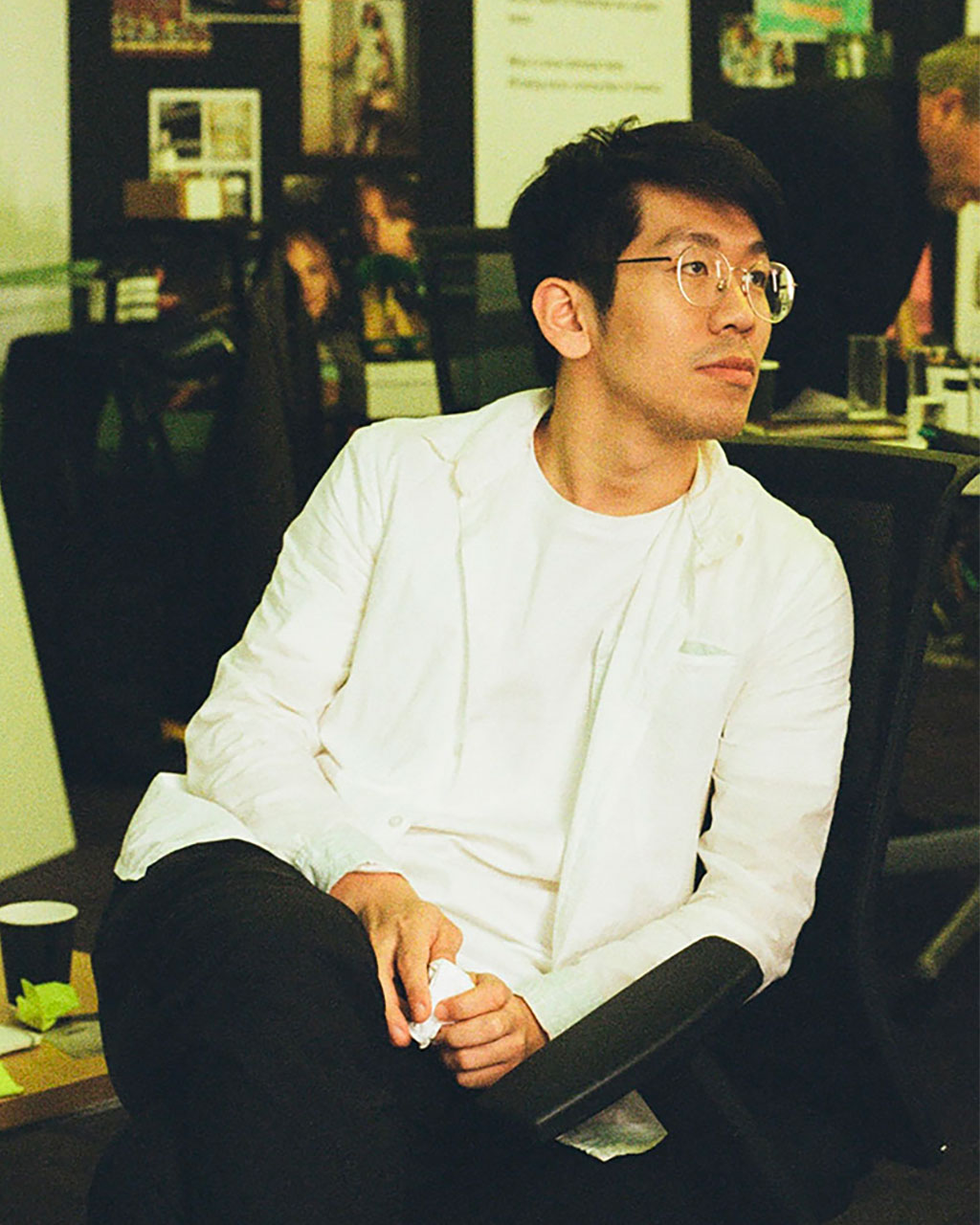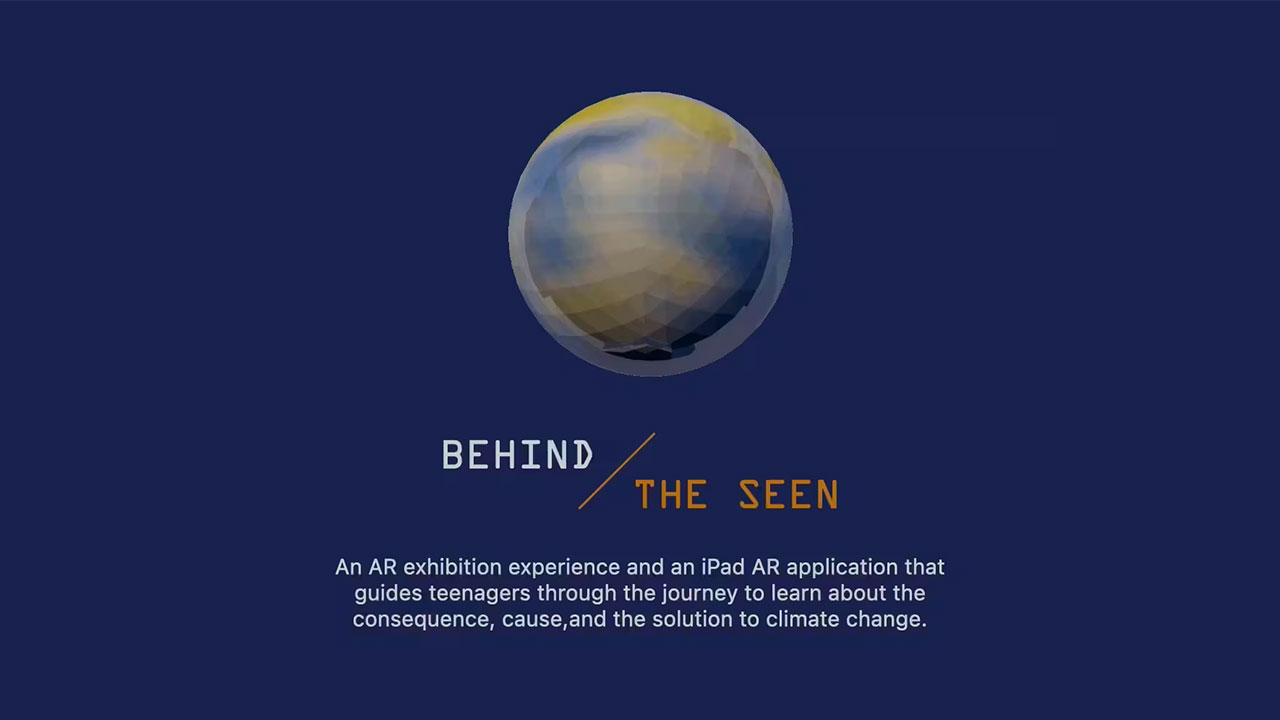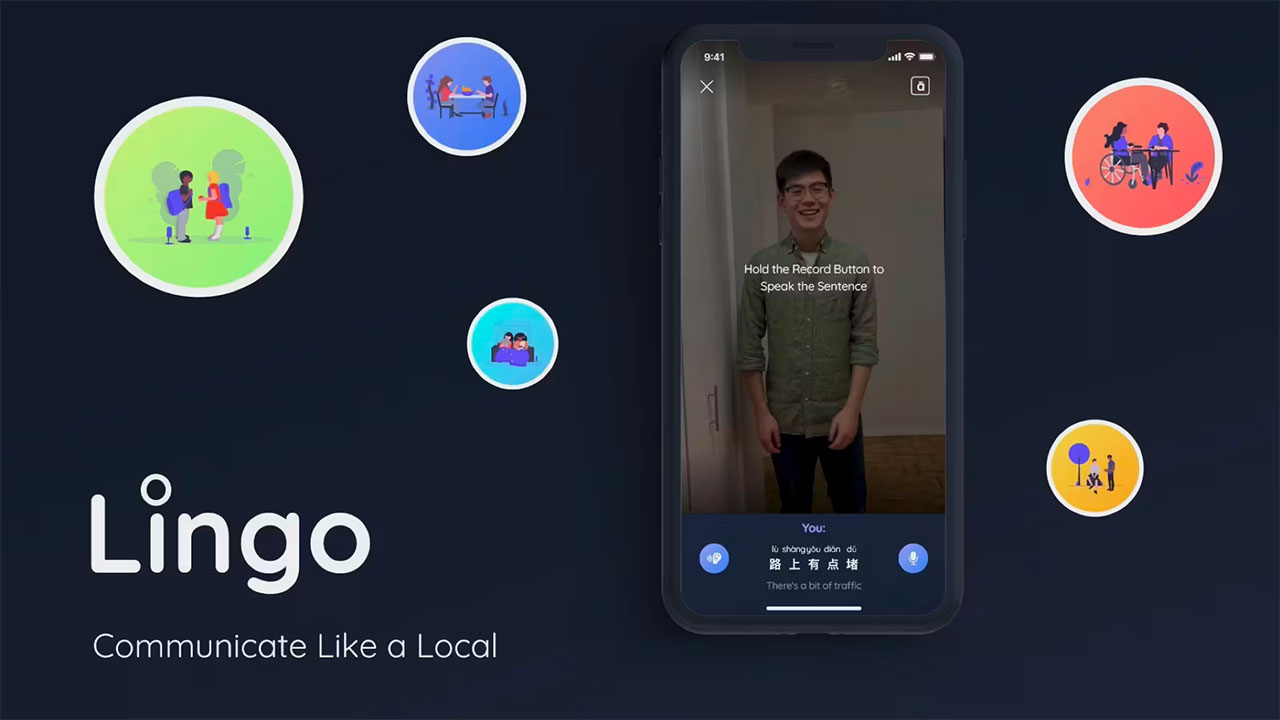Interview with Yohe Wang from United States

Interview with Vivien Luo from United States
August 10, 2023
Interview with Ru Fang Dong from Taiwan
August 10, 2023Interview with the 2023 MUSE Creative Awards Winner - Yohe Wang
I am Yohe (Hanzheng) Wang, a highly driven product designer currently working at Albertsons who previously worked at renowned companies like IDEO and Apple. With a proven track record of creating ground-breaking designs that merge emerging technologies with innovative consumer products, my work involves multiple areas, including eCommerce, healthcare, retail, education, media, museum, artificial intelligence, augmented reality, etc.
Born in Wenzhou, a city renowned for business and seafood in South-Eastern China, I pursued my passion for design and obtained a BE degree in industrial design and an MFA degree in interaction design.
Becoming a creative wasn't just a career decision for me. It was more like answering a call that had been echoing in my heart since I was young. When I was a child, I was deeply attracted to creative toys like Tangram and Lego. I enjoy using these little blocks to create a world in my own unique way. I also enjoy the feeling that my ideas can freely take form.
When my mom bought me my first camera, I hung it on my chest and tried to capture every unique moment of my life. I was interpreting the world from my own perspective. The most profound allure of creation is the ability to transform ordinary things into extraordinary experiences. And I found immense satisfaction in the process of design - the birth of an idea, the exploration and shaping of it, and finally, the manifestation of this concept into a tangible design that can impact and inspire the world.
When I created "Behind the Seen," I was not only motivated by the idea of leveraging emerging technology to motivate young generations to participate in this revolutionary movement but also by the journey from talking to kids and their parents to understand their ideas around climate change, to creating AR content to deliver the idea of decarbonization, to testing out a giant AR globe spinning in front of me.
Like I said in the beginning, being a designer/creative wasn’t just a career choice but also a magic power that constantly inspires me to be curious, hands-on, creative, and innovative and always to have a heart that wants to make the world and people's lives better.
I am currently a product designer at Albertsons, I lead the design for the eCommerce fulfillment team to deliver the best-in-class customer and associate experience for grocery shopping. My work has been driving success for last-mile delivery experience, fast delivery experience, and alcohol delivery experience.
We are one of the biggest grocery companies in the US, with 18 banner brands. We are on a mission to revolutionize the shopping experience for our customers with personalized digital discoveries that are engaging and memorable. We aim to change the way people think about food, cooking, and feeding their families, and we want to provide the ingredients and options to suit every lifestyle.
My daily work includes the following:
- Collaborate with cross-functional team to define best-in-class customer and associate experience for key fulfillment initiatives.
- Balance customer needs and technology constraints and translate business strategy into actionable design insights.
- Develop design solutions for new problems and improvements to existing features across multiple applications (apps and websites).
- Visit the store and fulfillment center to understand the user persona.
For me, creativity means many things. It’s a capability of always learning new ideas, keeping myself refreshed, and transforming ordinary things into extraordinary experiences. Firstly, creativity means “new.” As a designer, my passion is to innovate a ground-breaking experience to inspire and impact the world.
Therefore, I need to be a lifelong learner and always be curious about new ideas, new technologies, new human patterns, etc.
Secondly, creativity means “creating.” Ideas are cheap. The execution that makes it come to life matters more. As a designer, I am not only a creative thinker but also a maker. Whether it is a high-fi screen and interactive prototype or a physical product, I enjoy the process of transforming a concept into a tangible design.
Last but not least, creativity means “good”, because we're always creating better experiences for the future. As a designer, we are creating products, services, and experience that makes our lives and world better.
To me, a 'creative' idea or design is about breaking traditional thought patterns and presenting something fresh. It involves reimagining the ordinary, challenging norms, and creating meaningful user engagement. A creative design isn't just visually appealing—it works effectively, stirs emotions, and interacts harmoniously with its surroundings.
A truly creative design can be simple yet impactful, providing innovative solutions and adding unexpected value. It's not about being different just for the sake of it but about making a real difference, spotting opportunities where others see hurdles, and positively affecting people's lives. That's what I believe makes an idea or design genuinely 'creative.'
My creative and design process is a well-defined, iterative journey that seamlessly merges user needs, business goals, and technological feasibility. This journey spans four crucial stages: Conceptualization, Development, Implementation, and Enhancement.
The Conceptualization stage involves distilling the essence of user requirements and setting design objectives. It entails setting up project scope and strategy, understanding user needs and competitors, and crafting the foundational blueprint of the product. Effective cross-functional collaboration is the key at this juncture.
During the Development stage, the focus shifts to balancing user needs, business objectives, and technological capabilities. The product's experiential elements take shape through clear user flows, intuitive wireframes, engaging interaction designs, and compelling visual aesthetics.
Upon design completion, the Implementation stage involves transferring the design to the technical team for realization. A major focus here is on iterative improvements based on user feedback, ensuring optimized user task completion rates, satisfaction levels, and feature completion rates.
Finally, the Enhancement stage is a long-term commitment to continuously refine the design system, orchestrate effective cross-functional collaboration, and maintain operational efficiency. This systematic and user-centric approach underscores my unflagging commitment to crafting superior product experiences.
I would say the Development stage. This is the moment when ideas stop being just thoughts and start becoming something real. Here, it's all about balancing the act between user needs, business objectives, and technological feasibility. This stage allows me to translate abstract concepts into concrete design elements, such as user flows, wireframes, interaction, and visual designs.
The challenge of creating a harmonious intersection between aesthetics and functionality truly fuels my creative energy. It's like a giant puzzle where you have to make everything fit just right. Watching all the pieces come together into a design that really works for users – that's what keeps me hooked. It's tough but also fun.
I would use 3 keywords to define my creative style: simplicity, empathy, and practicality. I strive for designs that are clean and uncluttered, meeting users' needs effectively and efficiently. The design style of Apple is a good example of how I want my design style to be. It is clean, beautiful, intuitive and easy to operate.
I always prioritize understanding user emotions to create impactful and meaningful designs. Besides, every element in my work has a rationale, ensuring not just a pleasing aesthetic but also a practical, user-friendly experience.
Definitely, being from China significantly influences my creative process.
Chinese culture is pragmatic and this practical mindset extends into my design thinking. It prompts me to create solutions that are not just aesthetically pleasing but also functional and useful in everyday life. This practical aspect of Chinese culture pushes me to design with a purpose and think about the real-world applications of my work.
Through all my design projects, I try to make a real-world impact. GrowSquares helps urban citizens grow smart, personalized outdoor urban gardens with ease. Behind the Seen calls on teenagers to pay attention to environmental problems. Libra aims to solve political polarization by helping political news readers know where they are in the spectrum and read news from different perspectives. All these projects are solving real-world problems and making our everyday life better.
Furthermore, the strong emphasis on community and connectivity in Chinese culture greatly influences my approach to design. It reminds me that design is not just about individual experiences but about creating shared experiences that can bring people together. This perspective allows me to create designs that foster connections and promote community engagement.
From my project Behind the Seen, I aim to bring teenagers and their families together to talk to each other about environmental issues. In the third room, after they use renewable energy to learn how to slow down climate change, they are encouraged to share this experience to their friends and community to raise their attention to the environment.
Definitely. "Behind The Seen" is an AR exhibition that brings teenagers together to learn about the problem of climate change, grieve what has been lost, actively engage with solutions, and motivate everyone to join the fight for a brighter future together in an engaging way.
The entire exhibition uses spatial storytelling to create an educational structure about climate change and decarbonization through two interconnected parts (physical and AR). Physical installations and imagery teach about climate change and decarbonization. The augmented reality (AR) experience uses iPads to show what's happening 'behind the scenes’.
I want to enter this project because it is one of my favorite projects that raise the voice of fighting against environmental issues. I believe designers should not only create beautiful products but also have social responsibility to make an impact through our design. When I created this project, I wanted to leverage the power of my creativity to motivate the young generations to participate in the movement to protect our earth.
On the other hand, as the times advance, we should embrace new experiences and new technologies. "Behind The Seen" employs the emerging technology of augmented reality, educating teenagers in a “magic-like” way. I believe this is an inspiration not only for the education industry but also for traditional museums and exhibitions. I believe that they will continue to bring us more exceptional works using their wisdom.
In the journey of developing this project, countless challenges arose. However, the challenge I found the most gratifying to overcome was mastering a new technology from scratch and incorporating it into my design. While conceptualizing this project, I considered using AR technology to depict the hidden consequences and causes behind climate change - an environmental issue not easily perceived.
However, I had no prior experience designing AR projects. Consequently, I embarked on a journey to learn from scratch how to create digital content for AR using Cinema 4D. I also experimented with multiple prototyping tools to implement AR content, including A-Frame, Touch, SparkAR, Torch, Reality Composer, and Unity. After evaluating these options, I eventually chose Reality Composer for its superior material rendering, dynamic animation texture support, and simpler development process. The moment I saw the AR content I designed and produced come to life in space, I felt that all my efforts paid off.
Winning this award has had an immensely positive impact on both my career and my approach to design practice. It's not just a pat on the back but a sign that I'm on the right path with my designs. It's given me a huge confidence boost to take on even bigger challenges.
Having MUSE Creative Awards to my name has also made me feel more accountable for my work. I know that my designs can make a difference and this motivates me to put my best foot forward every time. I'm driven to make sure every design I create has the potential to inspire and make a real impact on society.
Not only that, but this award has helped my career take off. It has allowed me to share my achievements and experiences with upcoming designers. It’s a great feeling to be able to give back to the design community and inspire others. I always try to give back to the design community, which cultivated me and helped me become an outstanding designer. I think receiving this great award marks a good start.
- Inspiring Atmosphere: Creative people always bring new ideas. Working amongst other creative professionals, I am regularly exposed to fresh perspectives and innovative ideas. For example, the freelancer working for my IDEO project, who is a digital nomad inspired me that traveling around the world isn’t that hard.
- Freedom and Flexibility: I genuinely appreciate the flexibility of working in the creative industry. It allows me to shape my own path, experiment with my designs, express my unique ideas and also dress in my own style. This freedom fuels my creativity and enhances my satisfaction and passion for my work.
- Cultural Diversity: Lastly, the diversity in the creative industry is fascinating. It is a melting pot of individuals from various backgrounds, each bringing their unique experiences, life stories, and cultural nuances. This rich diversity fosters a dynamic creative environment that challenges and broadens my understanding of design, making it a true joy to participate in. I have worked with people who traveled to more than 30 countries, people who are members of the biggest magician club in the world and people who speak more than 8 languages.
I can already foresee how the creative industry would be impacted significantly by emerging technology and social-related issues. And I am very excited about this evolution to come.
The rapid advancement of technologies such as Artificial Intelligence, Augmented Reality, and Virtual Reality will drastically reshape the creative industry. They will not only become powerful tools for designers but will also create new mediums and platforms for creativity and expression.
It's an exciting prospect to imagine how we might use these technologies to push the boundaries of what is possible in design. For example, I can already imagine people sitting inside their AI-powered driverless car on the highway and working on other stuff like studying and eating in the next 5-10 years, thanks to the powerful artificial intelligence algorithm. Another example would be a future class where all students wear AR glasses and learn new abstract knowledge through tangible AR content.
On the other hand, as global awareness of health and environmental issues intensifies, the creative industry will increasingly prioritize sustainability. Designers will pay more attention to environmental challenges and social sustainability, using our creativity to promote a more sustainable future. For example, wicked problems like climate crisis and pandemic become increasingly important year by year. We can foresee more creative solutions come out over the next 5-10 years targeting these very wicked problems.
Don’t lose passion and curiosity. When I enter this industry, I have nothing but passion and curiosity. It is these two precious characteristics that keep motivating me to become an outstanding designer. I still remember how amazed I was when I saw the lights passing through the holes in the wall at Saint-Pierre by Le Corbusier and Jose Oubrerie, just like the starring sky in the daytime.
I also remember how passionate I am after walking out of the theatre after watching the documentary about Dieter Rams. And I clearly remember all the details when I watched WWDC 2023 on my phone and waited for my checked bag to come out at the airport. I heard Tim Cook announce that “One more thing,” and then Vision Pro came out. Those legends and great products always keep me touched, and motivated and make me don’t want to slow myself down on this road to the exciting future.
- Visit museums and exhibitions to keep yourself charged with new ideas.
- Watching great design documentaries like Abstract, Rams to keep yourself inspired by masters’ stories.
- Attend design conferences like IxDA, SXSW to keep up-to-date with design trends and build a network with design professionals.
- Leverage online mentoring platforms like ADPlist to learn and grow with help from other outstanding creatives.
The project “Voyage on the Planet” designed and created by young designer Chih Chiu is one of my favorite projects. It inspired me that a design could also make a huge real-world impact on society and change thousands of lives.
One day, Chih Chiu received an email from a young man asking if he could borrow his work “Voyage on the Planet”, which is a wearable that consists of a mask and a plant inside a transparent backpack, connected by respiratory tubes. The young man said there is a big dump in his city, but the government doesn’t want to remove it, so he wants to borrow Chih Chiu’s design to exhibit it next to the dump to run a campaign to push the government clear the dump. Chih Chiu agreed immediately. Weeks after, the miracle happened, and the government cleared out the dump because of the impact of this campaign.
When I heard about the result, that was the moment when I believed design can make a social impact and even change the world.
Winning Entries
Behind the Seen, an AR climate museum experience | 2023
Behind the Seen, an AR climate museum experience .
Behind The Seen is an AR exhibition about climate change that brings teenagers together to learn about the problem ...
(Read more at MUSE Creative Awards)
Lingo | 2023
(Read more at MUSE Creative Awards)
Yohe Wang
Becoming a creative individual felt like answering a call that had long echoed in Yohe Wang’s heart and has since then worked for renowned companies like IDEO and Apple with a proven track record of creating disruptive designs.
Read more about this interview with Xuecheng Xiong from the United States, the Gold Winner of the 2023 MUSE Creative Awards.



